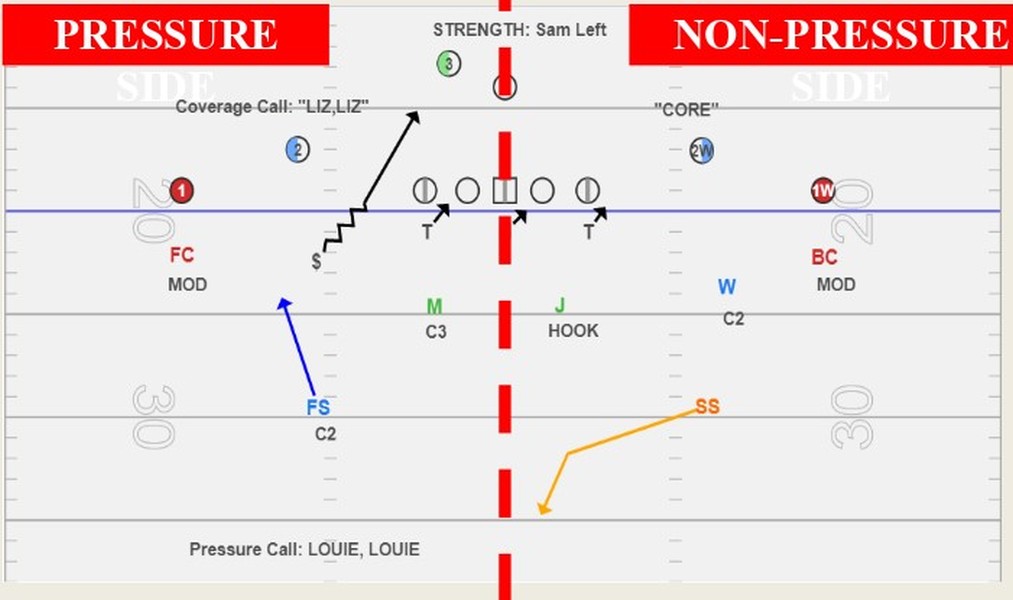By Steve Erxleben
Head Coach
South River High School (MD)
Twitter: @CoachErxleben
In today’s modern challenge of defending offenses that feature multiple formations made up of multiple personnel groupings with multiple forms of tempo, Defensive schemes have to be sophisticated enough to challenge the run, pass, and protection schemes while also be simple enough to allow players to play fast. As a defensive staff here at South River High School, we decided years ago to transition from more of a base front and coverage team to a scheme rooted in zone pressure and match-carry-deliver principles on the backend.
Football is cyclical and as offensive schemes die out or become under-unitized nationally, they can be reborn or rebranded years later, forcing Defenses to adjust the systems they adjusted for more modern schemes just a few years before. In the past few seasons we have encountered several opponents who have abandoned primarily 1 back zone and power schemes in favor of versions and Hybrid versions of Wing-T Belly, Power, and trap while utilizing both balanced and unbalanced (3x1) formations to add gaps to be defended.
The Wing-T and its different versions put many defensive schemes in a bind and the old adage of “guards take you to the ball” may not be enough these days to counter what these offenses have transitioned to and the issues that they create with the enormous number of personal groups, shits, motions, condensed formations, and blocking angles they can create.
At South River High School, we have adopted the theory that playing Wing-T team is more relatable to playing an option team in that responsibilities have to be delineated between the front and coverage with the front having more of a spill or “set the wall” mentality and the secondary clearing the pass and boxing the run.
To combat this trend our defensive staff has begun to utilize more 2 high man-match coverage concepts with specific run fits and keys while still relying on a 5 man pressure philosophy. This article will begin by identifying exactly what we are attempting to defend from a formation and scheme aspect, then how we align and hope to attack it, and finally how our 2 high man-match coverage allows us to remain a pressure-based scheme. This topic generally falls under one of the more ill forgotten rules of blitzing: You must think coverage first!
BASE FRONT TERMINOLOGY AND HOW IT RELATES TO PRESSURE
Even though this article is intended to discuss and analyze our specific scheme vs Wing-T alignments, it is warranted to first touch on our Base verbiage and what the Blitz and non-pressure sides are doing (DIAGRAM #1). In our base defense, we will set our front either to the field or the boundary, to or away from the multiple receiver side, to or away from the TE, or to or away from the Back in the shot gun. Where we are setting the front is a weekly game plan decision. Every snap we make either a “Roger” or “Louie” call which dictates where the 4th rusher is coming from and, if we are in a 3 deep situation, where safety support is spinning. Our Interior linemen always slant away from the front call (Roger/Louie) as the 4th rusher (our call side OLB) becomes the C gap player/5 technique call side. The reduction side call correlates with a coverage call to establish who the force player is to the reduction side as well as who the seam player will be. All of our same-side ILB/OLB or “edge” blitzes correlate with a Roger or Louie call, which we feel makes it easier for our players to identify and gives them a chance to focus more on disguise and triggering the blitz from a proper depth and angle.










